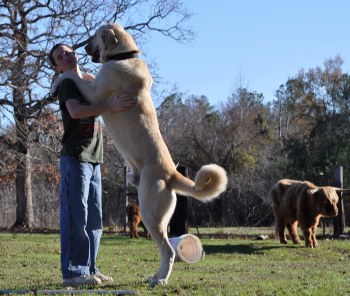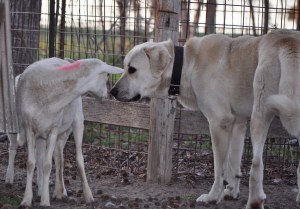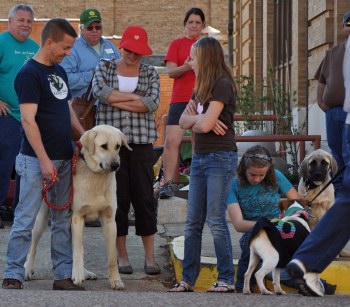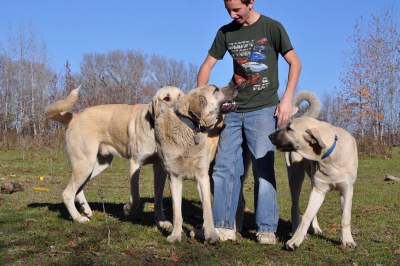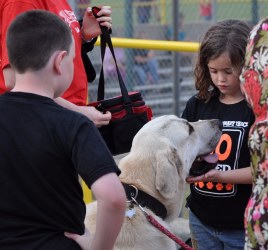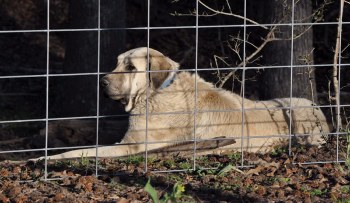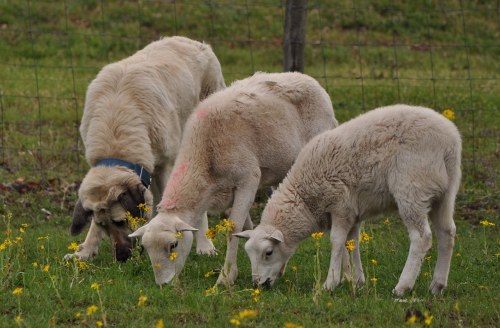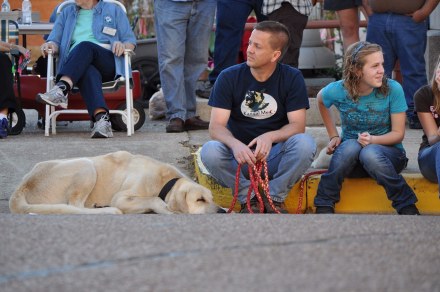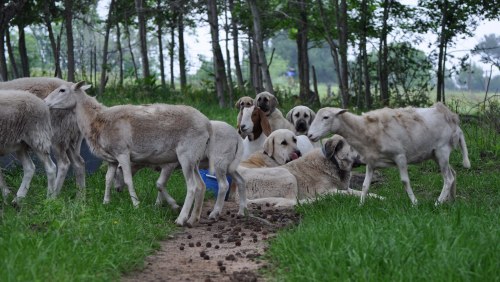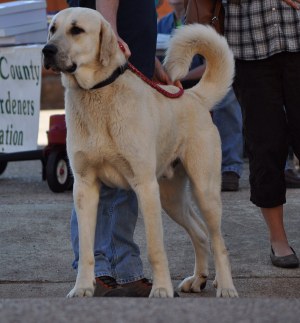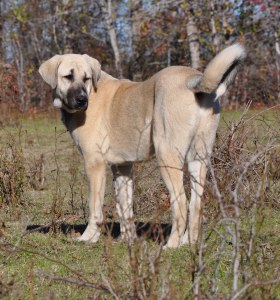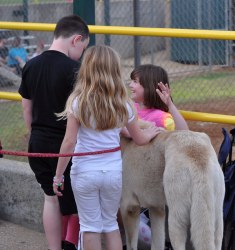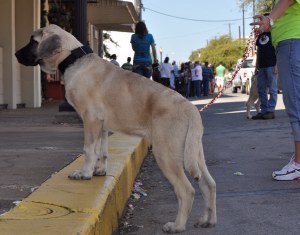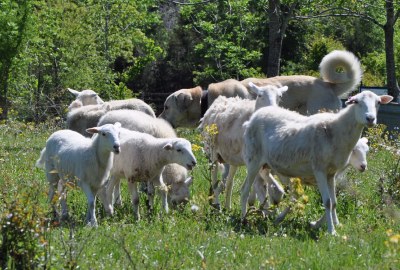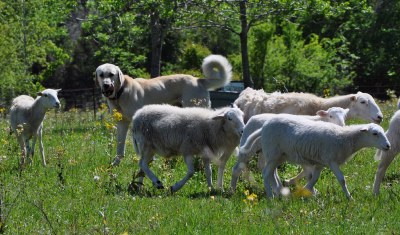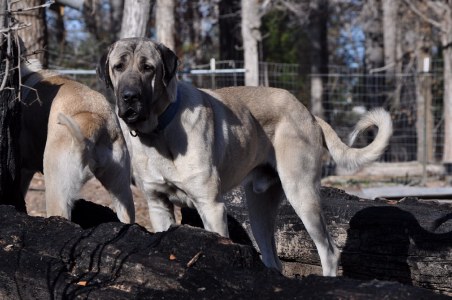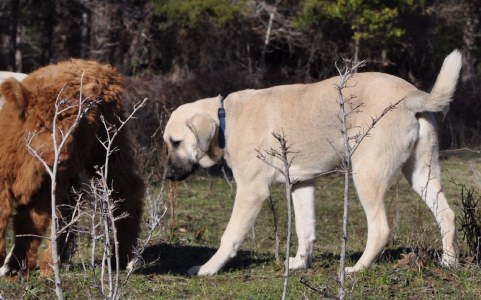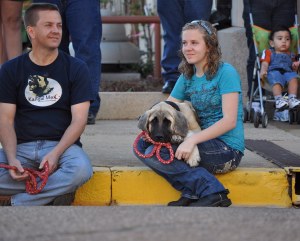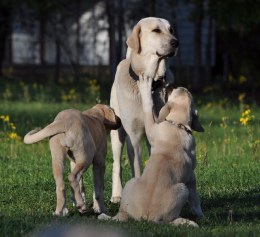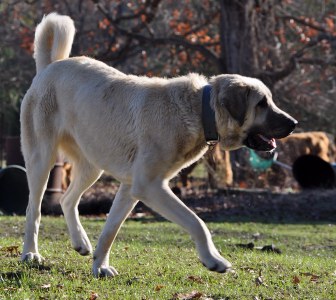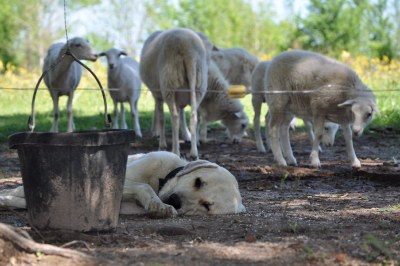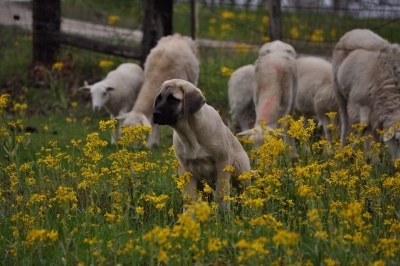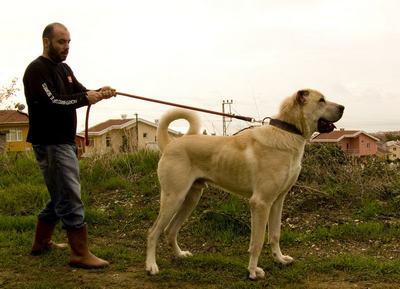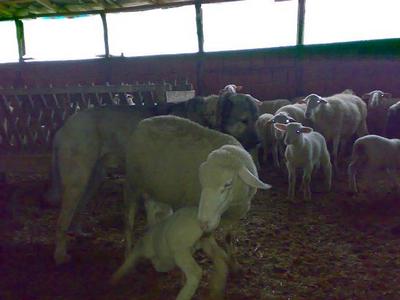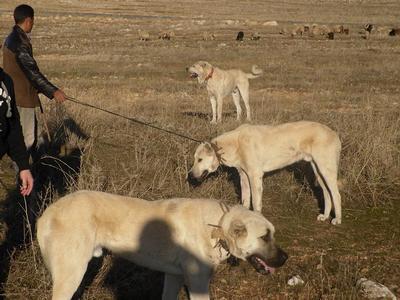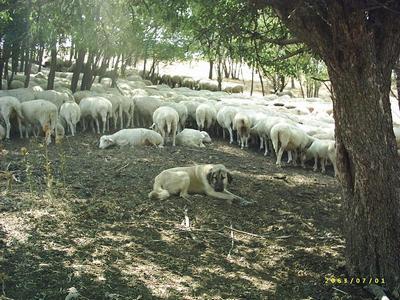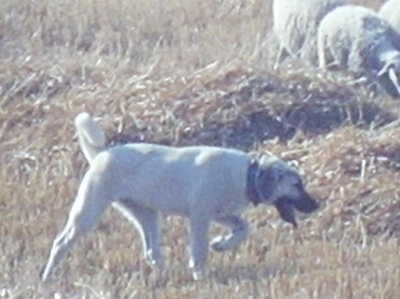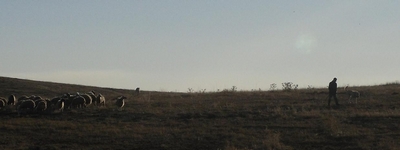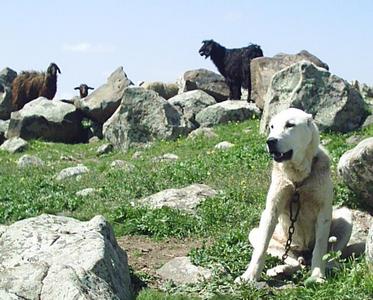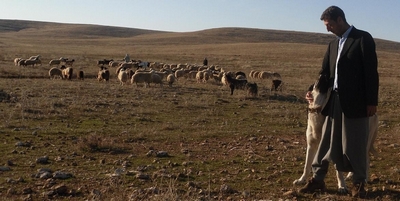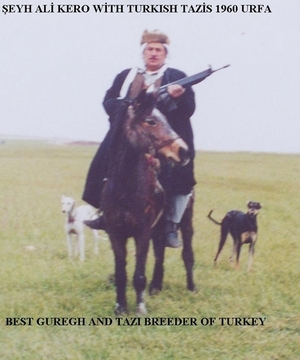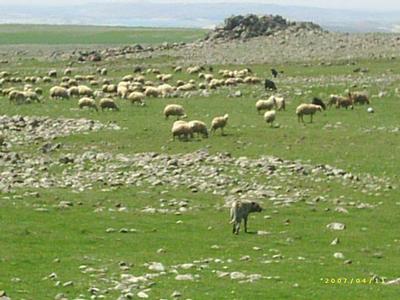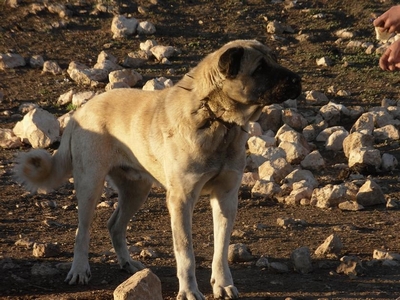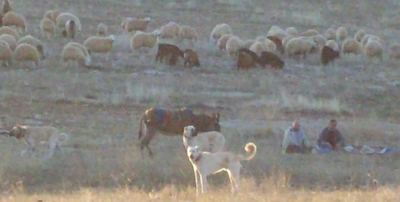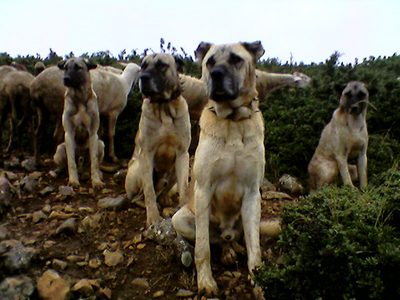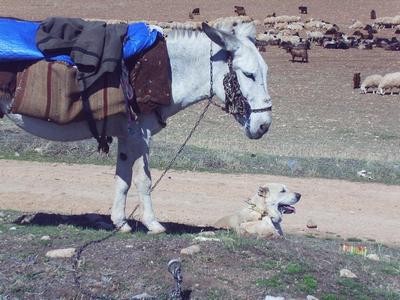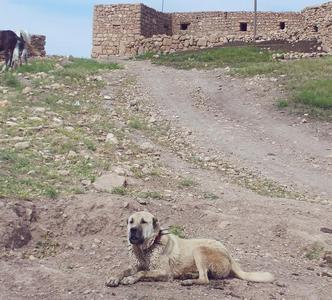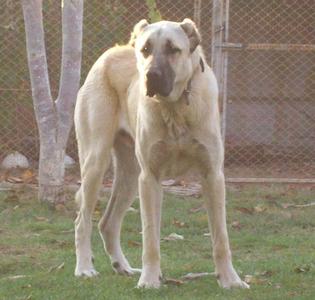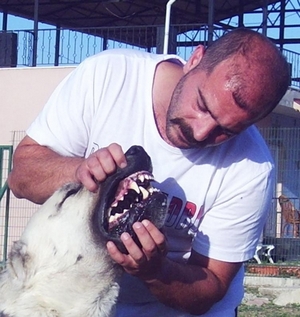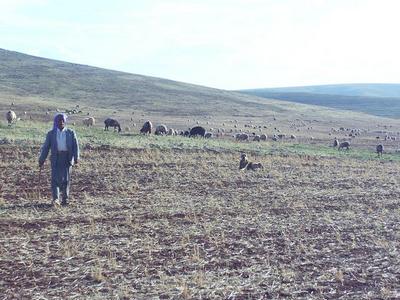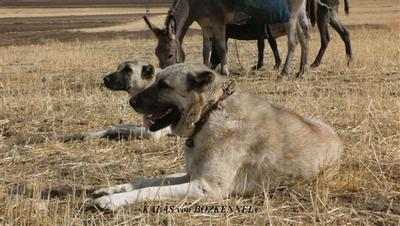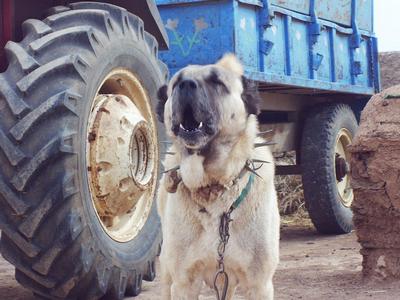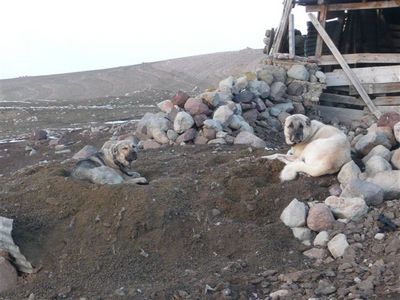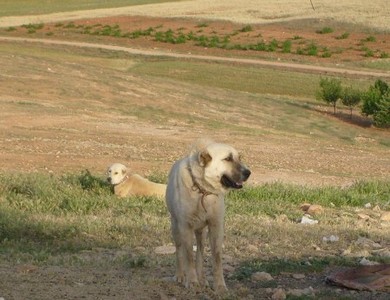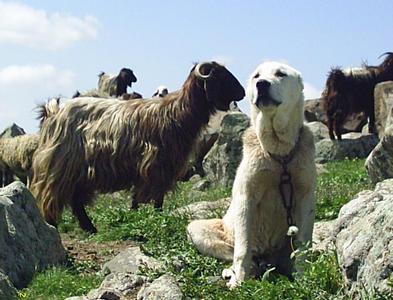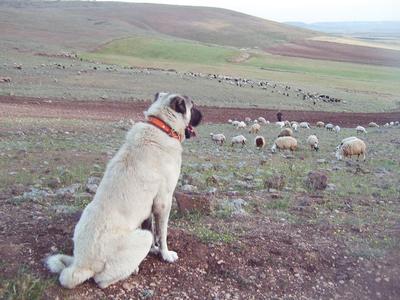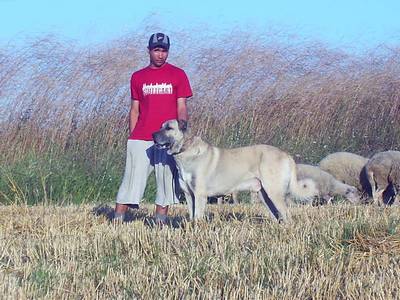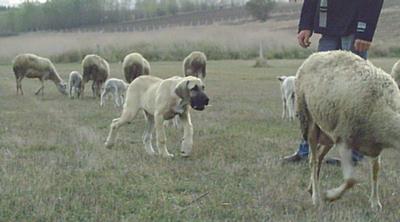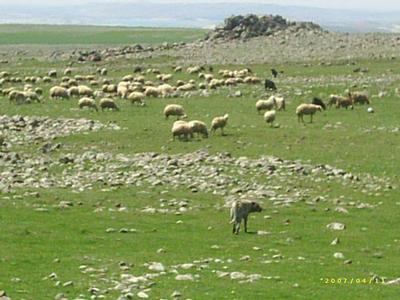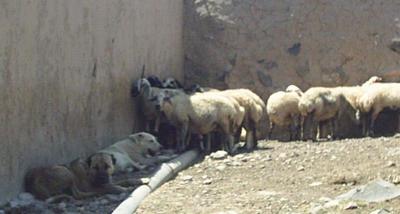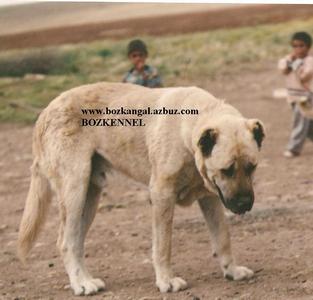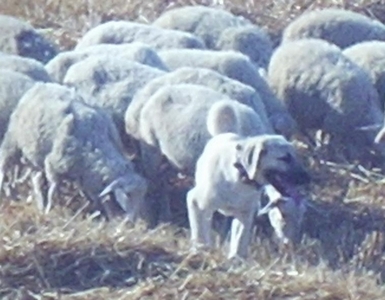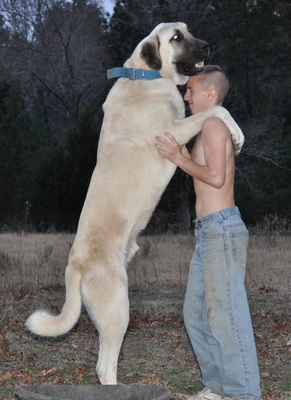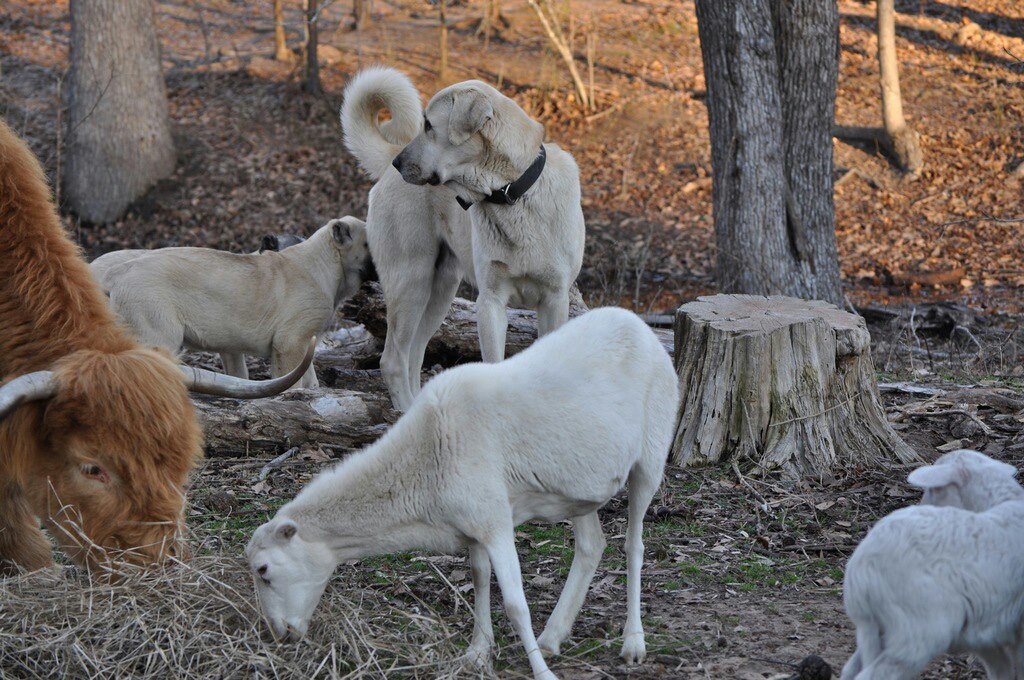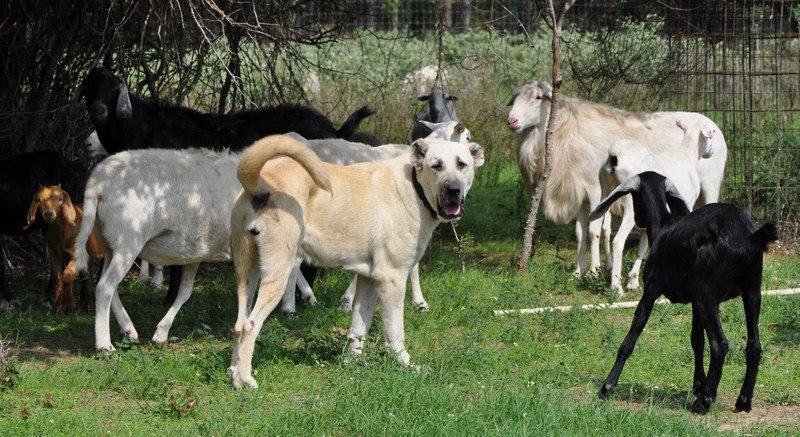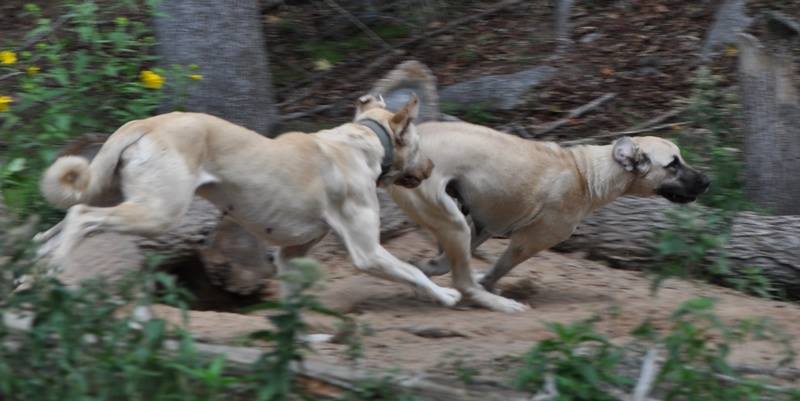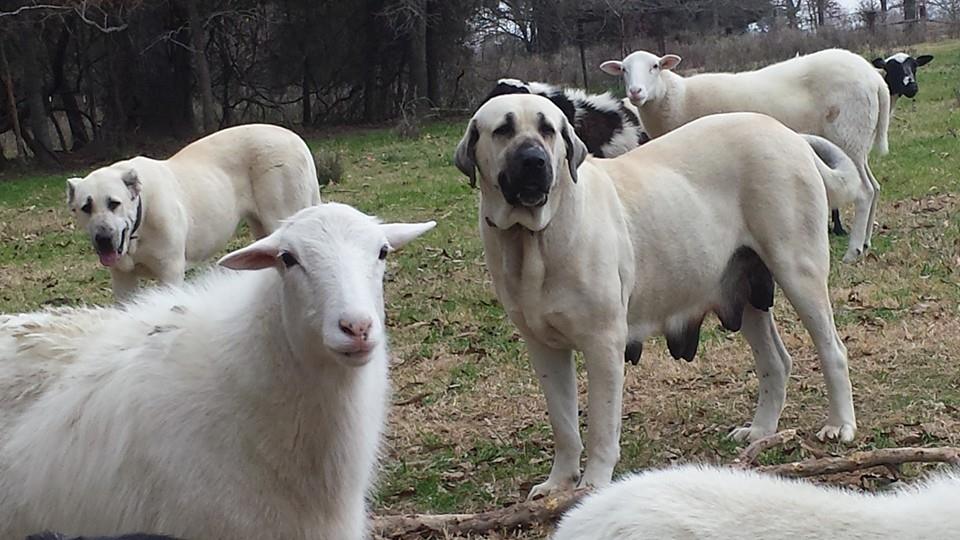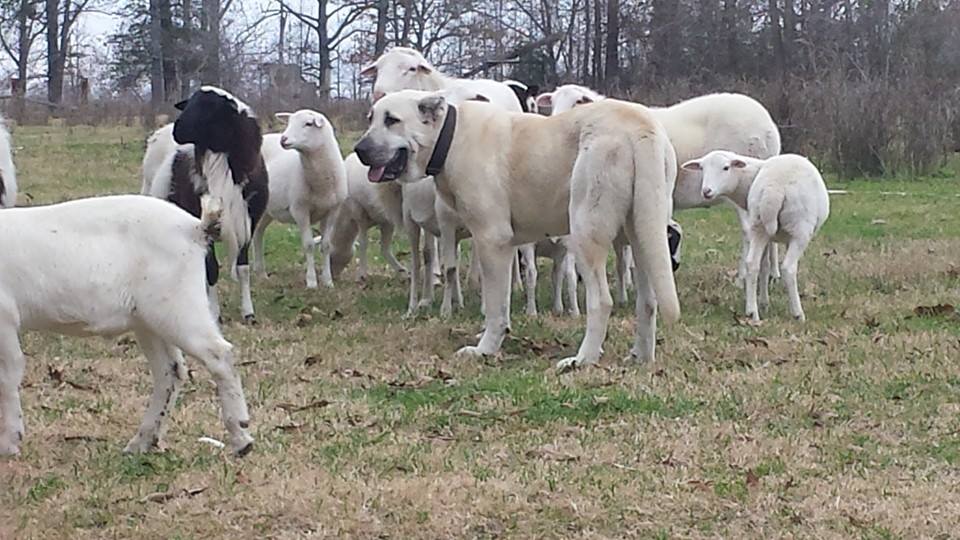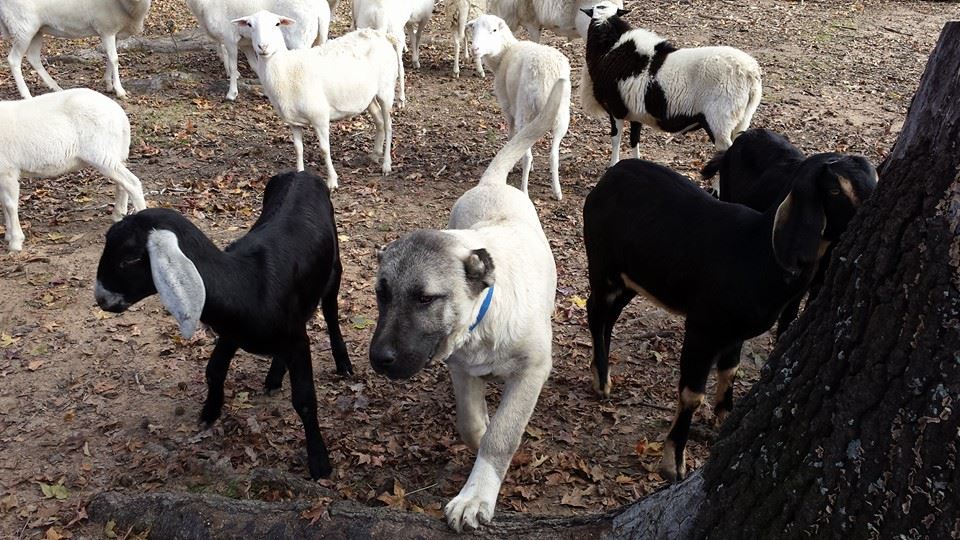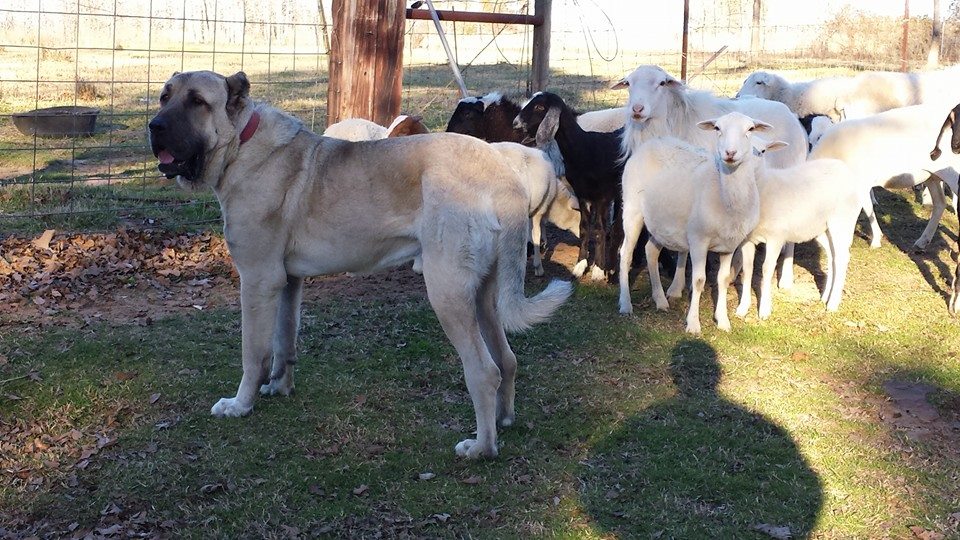Natural Born Guardians
Turkish Boz Shepherd and Kangal Breeder
Boz Shepherds
The Boz are arguably the largest most and most functional large dog breeds with regards to speed, strength, agility and endurance. They also remain one of the most versatile, sociable, loyal and intelligent LGDs in existence today. Their Livestock Guardian abilities are innate as they usually only need an introduction. Their drive to LOVE and DEFEND is at a level seen in few breeds. They are a breed that will fill many jobs.
With livestock it has been observed that the Boz have one of the lowest play chase drives of the many LGD breeds both myself and other Boz owners have utilized. What you get is a LGD that is more natural to the task, and has a much decreased incidence of the puppies or adolescents play chasing the babies or stock. This makes for a much more pleasant and easy experience to get a puppy to the point of being a reliable and safe LGD. I am able to have lambs born in pastures with multiple adolescent pups. Something I would never have dreamed of with the many other breeds I utilized over the 23 years using LGDs.
With the Boz you will get a larger more athletic and capable protector that is extremely intelligent and easily socialized to people. Being truly versatile, they can guard all your livestock, property and be a great family companion.
Compared to Kangals and Anatolians by the now many dozens of owners that previously or currently own Kangals and now have Boz, the general consensus is that Boz are less reactive than Kangals and better around people as well as having less play chase (prey) drive. This is not saying that Boz are a better dog, just that they might be better suited for some situations, as Kangals might be better for others. If i were a rancher in heavy wolf, mountain lion and bear country I would run 1 Kangal and the rest Boz. As the Kangal might be better at going out to find the predators and Boz will come in for the clean-up. But this is just my theory.
Comparrison between Turkish Boz and Turkish Kangals
To learn more about the Turkish Boz Shepherd please visit the Turkish Boz Information Site. The Breed information page is here. Akin Tulubas on Instagram Akin Tulubas on YouTube Akin Tulubas on Facebook Brian Peckinpaugh’s Facebook
Breed Standard on Boz Information Site
New breeding project sure to produce absolutely amazing dogs. BozKennel-USA
About Turkish Boz Shepherd Dogs:
Natural Born Guardians as the first Turkish Boz Breeder and Importer has worked the past 15 years establishing Turkish Boz in North America. Having imported now 37 dogs and assisting many others we have a more varied genetic base than most other LGD’s in the USA. We are now working to formulate and establish a novel breeding model to acquire and preserve the absolute top genetics available in Turkey and probably the world. Expect huge advancements in the quality of dogs produced in the next years, and a level of refinement never achieved by any breed.
The Turkish Boz Shepherd is a Regional Variant of the Livestock Guardian Dogs found throughout Turkey. In South and Southeast Anatolia, around Urfa, Nevsehir, Tuzkoy, Konya and Denizli, huge dogs are still working as Livestock Guardians. They are the dog of the Yoruk Nomadic Turkmen and evolved with this Nomadic culture still living in much the same way for the past 10,000 years. The first renderings depicting dogs of the type in the area are from 6,000 BC, the same period of time when sheep were first domesticated. This was back when the large mammalian carnivores, including the Caspian tiger (Panthera tigris virgata), Asiatic lion (Panthera leo persica), brown bear (Ursus arctos), gray wolf (Canis lupus), striped hyena (Hyaena hyaena), Eurasian lynx (Lynx lynx) and three subspecies of leopard (Panthera pardus tulliana, P.p. saxicolor and P.p. ciscaucasica) roamed mountains, plateaus and grasslands of Turkey, historically known as Asia Minor or Anatolia. Of the big cats, only the leopard and Eurasian lynx remain in increasingly isolated mountainous habitats. Evidence suggests a few leopards remain in Turkey's Black Sea mountain ranges and the inaccessible peaks of the Taurus Mountains in the south."
The one characteristic that distinguishes most of them from other Turkish Breeds is their Square Profile, or being as tall as they are long. Their muzzle is narrower, with a head like a racehorse. These are characteristics of the Yoruk, from which the Boz are a regional variant.
To address the false claim that Turkish Boz Shepherds are a cross of Kangals and Mastiff you would only need to look at their profile and bone structure. Ask those spouting this claim this one question. How can you breed a Mastiff with it’s short thick body and short thin leg bones and rectangle profile with a Kangal that has a rectangle profile and shorter body (and less substantial bone structure than the Boz) and produce a breed that has more of a square profile or longer legs and much longer body than either parent breed? And this is not even accounting for the size of the Boz’s feet as they have the largest webbed feet of any domestic dog and are more in line with a wolf. They are also faster, more flexible, have longer times in-between heats and many other more subtle differences than Kangals and Mastiff that would more make the argument that the Kangal is a breed down of an Ancient Boz.
They do not pace as frequently as Kangals, and are noted for being capable of greater speed and endurance. Having a high twitch muscle fiber with a quicker recovery is said to allow for these abilities. In the Yoruk type, both thin boned and thick boned can be found. Boz are the type of Yoruk from South East Turkey with the more substantial bone structure, and greater strength.
Note there is much conflict surrounding the subject of separating out the Regional Variants of Livestock Guardian dogs in Turkey. Some want to call them all Anatolians, and others want to name each after the town they come from. I feel that the answer lies in the middle, to separate out the types and regions. Some claim the Boz are a cross, because dogs from Tuzkoy, Urfa and Konya were bred together. If I had to guess I would say that the areas where Boz were and currently found are the areas of natural admixing of some of the other breeds and types in the area, as you would only expect to find in any working populations.
Called by several names (Boz, Guregh, Yoruk, Tuzkoy, Konya, Toros or Urfa), the Livestock Guardian dogs from South Anatolia have been historically selected for a level of size, strength, and physical ability greater than most of the other Livestock Guardian Breeds. The Turkish Shepherds from that area have also retained the practice of breeding to males that have proven themselves. The males that are 4-7 years old, having followed the flocks hundreds of miles each year, fought many wolves, and proven himself in many testing battles are the males that typically get bred. This had helped to reduce many of the health and structure problems that plague most of the modern large breeds of dogs, but changes in the agricultural model in Turkey is removing many of these testing practices and pressures. BozKennel-USA is hoping to maintain the historical quality of Turkish Boz Shepherds with an expansive breeding model incorporating a central control of all breeding decisions.
Longevity seems to be in the 8-12 year range. Some dogs having puppies at 9 years old, and on the flip side some passing much younger. With a planned database tracking all aspects of health temperament and function, BozKennel-USA hopes to be able to cull out the bloodlines that have issues.
The Boz Shepherd is a very large dog that has retained a level of function that is seen in few breeds. Most Boz can run 28-36 mph for miles per hour, pull 7-10,500 pound tractors, and have great endurance commendable for such a large dog.
Average Height and Weights;
Males range from; 32-40+" 150-275#
Females range from; 30-35" 125-175# Females tend to be smaller than the males.
In areas of large predators or high populations, the Boz will greatly increase a rancher's predator control ability. Boz are guarding cattle and sheep in Montana's wolf country with 100% predator control. They have the same drive to bond to and protect anything in their territory as the Kangal, and will quickly turn into a fierce protector to confront any threat.
The bred-in instinct to accept and protect livestock is amazing. They can be introduced to a new breed of livestock by containing the livestock in the dog’s area for a week or two. Supervise the first encounters or contact, and everything else seems to fall in place. They seem to have even less drive or potential to be aggressive or play rough with the livestock than the kangals or other breeds I have owned.
Boz are a tough dog that can tolerate environmental extremes. They are well adapted to live outside year around with the livestock in Turkey, and from the humid heat of East Texas to the cold of Northern Montana here in the USA. I have taken my dogs on 4 mile walks in the city with temperatures from 96-102 degrees. They are not sensitive to changes in food, and can be left with food out all day.
As Family Protection Dogs, the Boz Shepherd is a natural. With their deeply ingrained drive to bond (LOVE) and protect (DEFEND), we find them to be a great addition to the family. They are naturally submissive to all members of the family, to include the children, and are not the type of dog that tries to dominate (although some are extremely dominant and WILL make their own decisions). They are a breed that truly loves you. They are very sensitive to correction and MUST have your affection and approval. This is not a dog that can be tied in the back yard, or only given minimal interaction. Boz Shepherd Dogs need to be part of the family. Verbal correction is usually all it takes to change a bad behavior. Before bringing a Boz into your family take the time to learn about the breed and especially about the parents and their bloodline, as some are much better suited as LGD’s facing extreme predators than laying in your kitchen. Also consider that you are bringing a dog into your home that can eat off your table and even eat out of your kitchen sink standing flat footed.
They are a dog that can protect your farm, escort you in town, or sleep at your bedside. The fact that I literally do not even own a key for the locks to my home and leave my car/truck keys inside them should say something. The fact that i am posting this for the world to see testifies to my confidence in them.
Being a multi-function dog is one of their best qualities. Unlike some LGDs that have to be bonded to a particular type of livestock, the Boz will protect anything in their domain. They will function as a Family Protection dog, Livestock Guardian dog, and even hunt.
The Boz Shepherd is somewhat of an ancient type of dog, with some characteristics that separate them from many of the modern breeds. They have huge feet with webbed toes, much like what enables the wolf to travel over deep snow. Female’s heat cycles tend to be every 8-10 months and will not have their first until 12-16 months old. In Turkey, with the limited available nutrition, the younger females at times will lactate to help feed the alpha female’s pups. Alpha females with puppies sometimes kill other female's puppies, freeing those mothers to feed their young. These are wild traits that have been retained through necessity for survival in areas of limited resources and have not been selected out by pampering.
Please note, the Boz Shepherd is not a dog for every person or situation. They are by far more powerful than most breeds, and their physical capabilities are extreme. They have a Natural Born Guardian Instinct, and need proper socialization and training to ensure safe and responsible ownership. A puppy will not be placed a home or ranch that is not able to provide a safe and responsible environment.
Boz Shepherd Dogs in Turkey working as Livestock Guardian Dogs.
________________________________________________________________________________
________________________________________________________________________________
________________________________________________________________________________
Nomads and nomad tents in the village of opium-Afyon-Basören continuing story of life. (Look closely for the Boz Type dogs)
________________________________________________________________________________
Visit our Galleries for more photos and videos of these incredible dogs
* * *
Turkish Dog Federation is currently registering Turkish Boz through WAD in Turkey
Please visit this site to read reviews posted about Turkish Boz Shepherd dogs and post your experience if you own one. Is the Boz a Breed?
